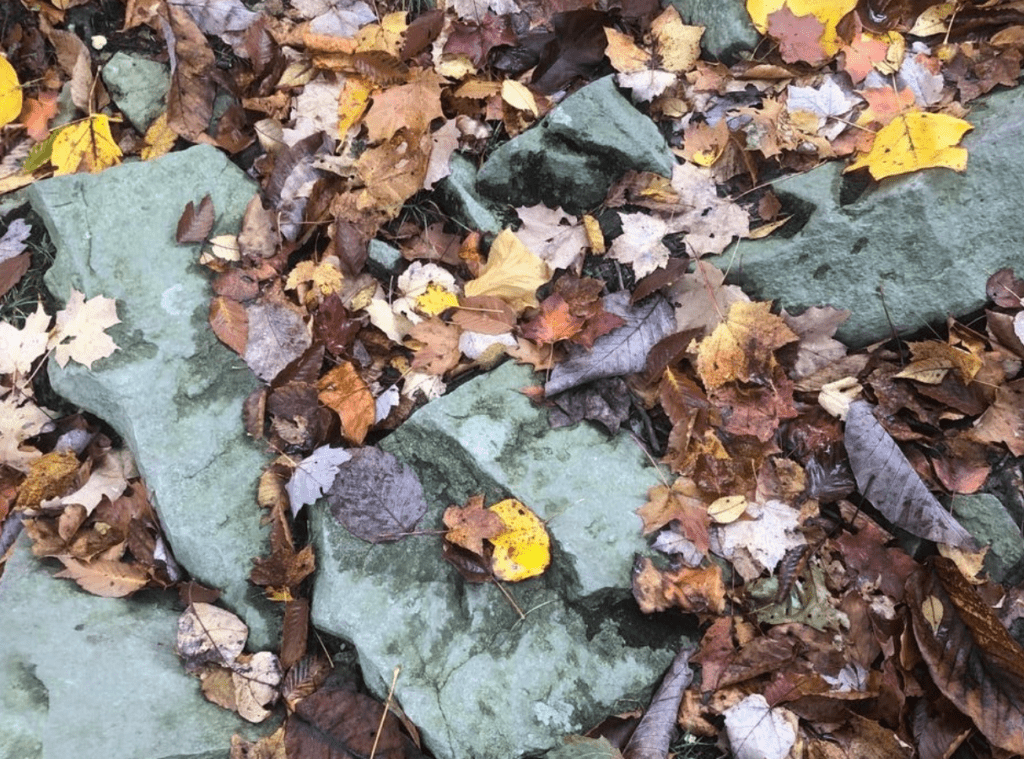
I came across a photo I took last fall while hiking in the Laurel Highlands in Pennsylvania. Looking at it now, I feel again the chilling breeze, the dangerously slippery wet leaves underfoot, the disappointment that the fall colors we expected to see in the high canopy had been scattered by the winds before we arrived and had already settled on the ground below.
It was unexpected to have to look down to admire the various colors now strewn on top of and in between rocks of blue slate. There was disappointment that my plan to collect some leaves to bring home had been made nearly impossible by the recent drenching rains.
Now this spring in Pennsylvania, seasonal expectations are again thwarted by cold and rainy weather. As the resident caretaker to our garden plants, I brought in what could be brought in last night and covered the rest as recommended by the local weatherman. Frost was intended for pumpkins, not vegetables and flowers just emerging in spring.
A reminder of a treacherous trail, my photo illuminates for me a truth I was not aware of in that moment when I took it. Everything dies, in its appointed time or beforehand, but here I’m seeing the intricacies of the decay, the beauty in the decline– a symbol of grief and its many faces in the changing seasons.
As if to join this conversation I was having in my own head a friend sent me a note about The Artists’ Grief Deck. https://griefdeck.com/. This deck of 60 flashcard are an Arts-based Toolkit for Communal Grieving in a time of social isolation. On one side, the cards feature an image individually designed by an artist; on the other, a suggested activity to do as you participate in what I would call, The Art of Grieving. Rather than being something we need to do once or twice in our lives, the actions of grief are necessary, episodically and frequently throughout our lives.
The cards in the Artists’ Grief Deck inspire and invite people into an artistic process -taking what you know and applying it to a new frame, in memoriam for someone or something you have lost during this unprecedented time. The colorful images of hugs, flowers, water, and stone take us to the side of our brain where words are few, but intuition and instinct live. The topics and suggested activities–“Helping Others Will Help Yourself,” “Repetition and Healing,” “Let Others Know What You Need,” confirm that grieving is a verb, and provide wisdom on provide ways to move through its seasons of sometimes unanticipated yet continual change.
Artist Adriene Jenik, and the organizations The Artists Literacies Institute, and the National Hospice Cooperative collaborated to produce this toolkit and have offered it free to grief workers and community organizations. Visiting the Artists’ Literacies Institute website confirmed for me what my own experience and the experience of companioning others through their grieving process have taught me. Grieving is an art, and one we can learn to do well. Using artistic processes, which are human processes, helps us “break through biases, old patterns of thought, and create, above all, knowledge and action.”

